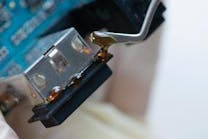Seoul Semiconductor Obtains Permanent Injunction against Philips TV Product

ANSAN, South Korea – Seoul Semiconductor Co., Ltd. (KOSDAQ 046890) (“Seoul”), a leading global innovator of LED products and technology, announced that it has successfully obtained a judgement of permanent injunction in a patent infringement lawsuit against Fry’s Electronics, one of the largest big-box retailer of consumer electronics in the United States.
The Texas Eastern District federal court issued a permanent injunction against the sales of several TV and lighting products, including a Philips TV product, as well as light bulbs of Feit Electric, according to a stipulation made between Seoul and Fry’s.
In its litigation, Seoul asserted 19 patented technologies significant for LED TV and bulb components. These technologies include a Multi-Wavelength Insulation Reflector widely used for “0.5W to 3W” level mid-power LED packages, BLU (“Back light Unit) Lens Technology for providing uneven distribution of lights on display, LED packages with enhanced durability, and WICOP (Wafer Level Integrated Chip On PCB) patents enabling LED chips to be soldered to a PCB without an LED package - the world’s first developed revolutionary technology.
In particular, Seoul’s “BLU Lens Technology” is a unique technology applicable not only to TVs and monitors but also any type of flat display that distributes light evenly on a wide area of the display unit.
Recently, Seoul has obtained a series of permanent injunctions in U.S. and Germany, prohibiting the sales of various infringing products, such as High-Power LED packages, Mid-Power LED packages, LED light bulbs, LED filament bulbs, and LED TVs. The patented technologies involved in these cases can be characterized as follows:
Comparison of each generation’s characteristics
Section | Luminous Efficacy | Life time | CRI | Operating Temperature |
1st generation | Below 70-80 lm/W | Below 5,000-6,000 hr | Below 70 | Below 70-80 ℃ |
2nd generation | Over 150 lm/W | Over 10,000 hr | Over 80-90 | Below 150 ℃ |
“We hope that Seoul’s success story based on significant R&D efforts will set a good example for young entrepreneurs and small businesses struggling to have their talents recognized in the market,” says Seoul’s founder Chung Hoon Lee. “We will continue necessary actions against companies that we suspect of infringing our patents or of having unlawful access to our trade secrets by soliciting employees,” added Lee.
Seoul Semiconductor’s 19 patented technologies – range from epitaxial growth to solutions
About Seoul Semiconductor
Seoul Semiconductor develops and commercializes LEDs for automotive, general illumination, specialty lighting, and backlighting markets. As the second-largest LED manufacturer globally excluding the captive market, Seoul Semiconductor holds more than 14,000 patents, offers a wide range of technologies, and mass produces innovative LED products such as SunLike – delivering the world’s best light quality in a next-generation LED enabling human-centric lighting optimized for circadian rhythms; WICOP – a simpler structured package-free LED which provides market leading color uniformity and cost savings at the fixture level, providing high lumen density and design flexibility; NanoDriver Series – the world’s smallest 24W DC LED drivers; Acrich, the world's first high-voltage AC-driven LED technology developed in 2005, including all AC LED-related technologies from chip to module and circuit fabrication, and nPola, a new LED product based on GaN-substrate technology that achieves more than ten times the output of conventional LEDs. UCD constitutes a high color gamut display which delivers more than 90% NTSC. For more information, please visit www.seoulsemicon.com/en.






